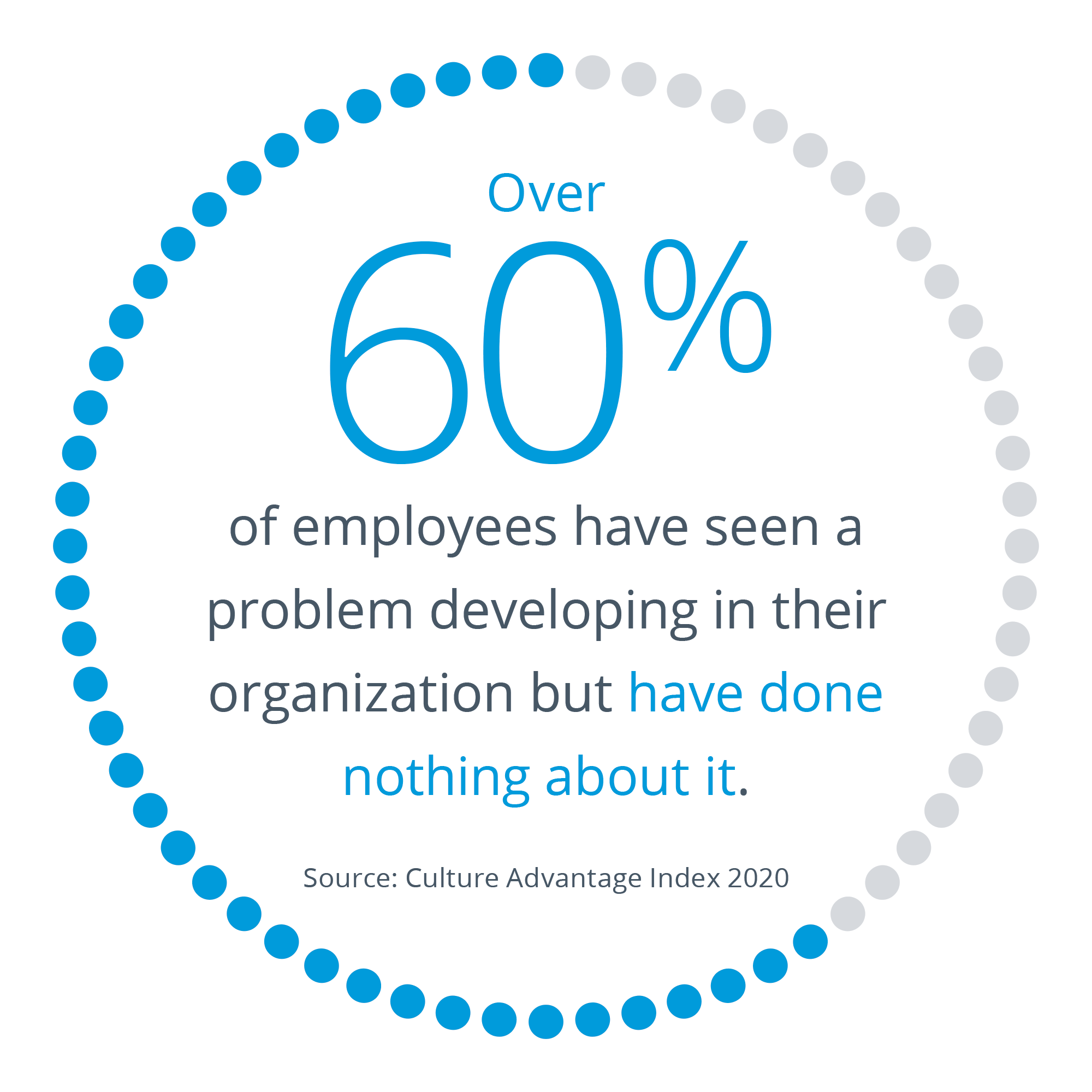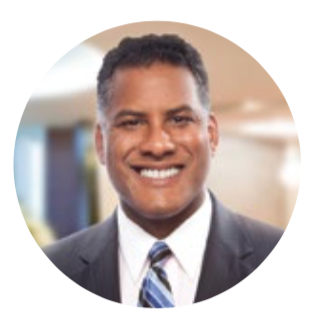What separates companies that outpace the competition from those struggling to keep up?
Is it quantifiable?
We asked these questions when constructing the Culture Advantage Index®, hypothesizing that culture mindset was a significant factor in whether an organization reached its targets.
DEFINITION
culture mindset
how people show up every day to contribute, negatively or positively, to where the organization is heading.
When launching products, incorporating new technologies, or simply being innovative, agility is paramount. How can a company keep apace if more than half of its workforce resists change and fails to collaborate cross-functionally?
When targets go unmet, typical strategies focus on bridging the gap—reappointing duties, modifying protocols, hunting for better talent, or funneling additional resources into floundering projects. These attempts may work temporarily. The new hire alleviates the resource-deprived department; the new process provides greater organization and visibility; the cash-infused project reaches the next milestone.
Over the long-term, these strategies are doomed because they don’t address the underlying source of underperformance: culture mindset. This is how people show up every day to contribute, negatively or positively, to where the organization is heading. The capacity to adapt and align around disruption is dependent on a culture mindset that is flexible, forward-thinking, and resilient. How do we define, measure, and develop this mindset?
The Four Core Components of Culture Mindset
Culture experts at Partners In Leadership have been studying the impact of employee accountability on organizational performance for thirty years. Early on, they observed that accountability is widely misunderstood—either conflated with responsibility, seen as a soft skill, or perceived as punitive. They set out to redefine accountability as a positive and personal choice to rise above one’s circumstances and demonstrate the ownership necessary for achieving desired results.
Since then, they have witnessed how this shift in mindset empowers people to move away from excuses and finger pointing when things go wrong to taking ownership over the circumstances, develop solutions, and act on them. This is when people contribute their best at work.
Organizations experience growth when individuals exhibit joint accountability, in which all employees and leaders share a sense of ownership for delivering results. With new research, we now have an expanded understanding of accountability, identified as the four components of the culture mindset:
Feedback Seeking: An individual’s conscious commitment to seeking out the perspectives held by others. Seeking feedback allows individuals to identify and correct behaviors that may have a negative impact on the achievement of organizational results.
Psychological Ownership: The capability for employees to connect their daily tasks to the organization’s results and display ownership of the decisions that affect them. Individuals who are invested in achieving organizational results exhibit a personal stake in the overall performance of the organization.
Creative Problem Solving: Tenacity and diversity of thinking, along with the ability to connect ideas across functional groups and ask “What else can I do?” to address any gaps in achieving needed results.
Taking Effective Action: The ability to take action, communicate, and work well cross-functionally; and the ability to continue moving forward even when unexpected events arise hindering progress towards achieving results.
Measuring Culture Mindset
The ability to measure mindset is a critical prerequisite to shifting mindset. Measuring how people think and act is no easy task—something we’ve been developing for years. We know that business results are key indicators for evaluating how people show up every day at work. If an organization reaches or exceeds results, we assume that employees are contributing in positive ways to execute the strategic vision.
We designed the Culture Advantage Index to get a more precise understanding of culture mindset. The Index measures levels of accountability, engagement, personal development, clarity of results, and speed & agility across the organization. Composite results provide a quantifiable measure of culture mindset. The metrics offer a detailed view of accountability in the organization—pinpointing where the company is suffering from a lack of accountability and where it is highly accountable.
For example, when an organization discovered that only 29% of its employees agreed with the statement “I feel comfortable asking superiors for feedback,” it revealed a crucial gap in feedback seeking.  In a company where over 60% of employees affirmed that they have “seen a problem developing in their organization but have done nothing about it,” there is a widespread lack of psychological ownership. As a whole, this organization lacks the mental resolve to do what it takes to deliver on its results.
In a company where over 60% of employees affirmed that they have “seen a problem developing in their organization but have done nothing about it,” there is a widespread lack of psychological ownership. As a whole, this organization lacks the mental resolve to do what it takes to deliver on its results.
Similarly, when a score indicates that few employees “think outside the box,” we can identify a gap in creative problem solving. When even fewer “adapt priorities to adjust to new information,” we see the problem compounded by a limited ability in taking effective action.
Leveraging Mindset
Undeniably, the detailed measurement of culture mindset offers considerable advantage in identifying gaps that need to be bridged. But there is also great value in discovering hidden strengths, which can be leveraged immediately to deliver on results by biasing strategy toward that potential while other gaps are being filled. Any organization will benefit from overall improvement in accountability, but understanding the current shortcomings and competencies offers greater development efficiency and faster return on investment.
Seeking feedback offers employees the perspectives they are missing—the ability to see problems that have otherwise escaped them.
It is also important to note that there is a sequence to the operation of this culture mindset. Seeking feedback offers employees the perspectives they are missing—the ability to see problems that have otherwise escaped them. It occurs first because people can only take ownership of a situation when they are aware of it. Similarly, since people only work to solve problems and act on solutions after they make them their own, psychological ownership is next in the sequence. And clearly, developing a solution precedes acting on it, so creative problem solving and taking effective action are the third and fourth “steps,” respectively.
There is also a sequence to leveraging this mindset to deliver results: measure, analyze, fix. The first iteration of this sequence offers the initial benefits described earlier. Subsequent iterations comprise the process for building a workforce that is resilient in the face of failure, flexible and open to change, and positive even when problems appear unsolvable—or in a word, agile.
ABOUT THE AUTHORS

Ron Paul, Ph.D.
Dr. Paul is a Senior Consulting Partner. He has an outstanding background in business, specifically with experience in culture management, leadership, coaching, and facilitation.

Sheina Laws
Sheina Laws is the Director of Data, Analytics and Insights for Partners in Leadership, with extensive experience in advanced statistics, assessment validation, and executive coaching. She is a Ph.D. candidate in Industrial and Organizational Psychology.




